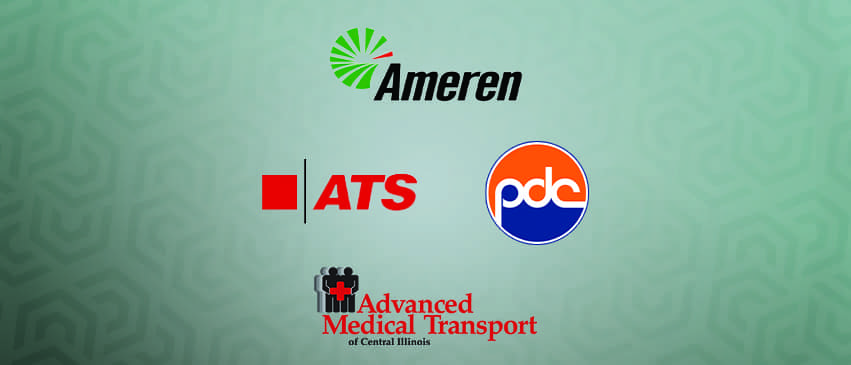
One year ago this month, the COVID-19 pandemic arrived in central Illinois. Needless to say, working through a global pandemic has not been easy on anyone. Employers were forced to retool their processes quickly in order to keep their employees and customers safe while maintaining business operations and productivity. From remote working and enhanced safety protocols to helping team members cope with emotional trauma, the business community has witnessed perhaps the broadest upheaval to workplace culture in history, and many of these changes will stick around long after COVID-19 is gone. Peoria Magazine checked in with four of the area’s largest employers—Advanced Technology Services (ATS), Advanced Medical Transport (AMT), Ameren Illinois and Peoria Disposal Company (PDC)—to learn more about how they have coped with the challenges of the past year.
Describe any workplace mitigations your company has implemented during the COVID-19 pandemic.
Richard Mark, Ameren: When the pandemic hit, utilities were designated as essential service providers, critical to the public’s health and safety. So while other sectors may have pulled back, we needed to maintain continuity of operations and do it in a safe manner for our workers and our customers. Early on, we felt it was important to give our customers confidence that we would be able to keep the electricity and natural gas flowing with no disruptions. This took on added significance with more of our customers working from home and the demand for energy higher than ever.
We also had to quickly implement safety protocols for our field crews. Work on the electric and natural gas infrastructure is often done in teams, and we adjusted our practices to minimize employee exposure to COVID-19. One example of risk mitigation was establishing pre-set crews who would work together each day and remain together through the completion of a project. We began permitting only one individual per company vehicle and allowed only one individual at a time to work in a bucket on an overhead power line or in an open excavation area. We had to adjust to maintain six-foot social distancing. In our facilities, we closed off common seating areas like break rooms and conference rooms. Safety kits were assembled and delivered to each individual working in the office areas. In a few areas, we separated floors using “bubble walls” for added protection.
One big challenge we faced was in transitioning our call center personnel to work from home. These professionals field over three million customer calls annually, so it was imperative they be given the resources at home in order to maintain high levels of service without interruption. While the customer experience was seamless, it was quite a logistical undertaking to transition 200-plus representatives in a short period of time. Many of our administrative staff and other employees have been working from home since March 2020 and will continue to do so until it is safe to return.
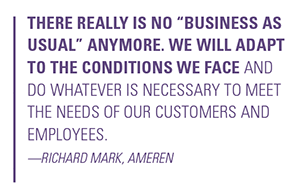 Josh Bradshaw, AMT: Early on in the pandemic, AMT recognized the need to provide support for our workforce in many different aspects of their lives. After securing a healthy stock of PPE, and partnering with a local restaurant to provide meal delivery while options were limited, we took a deeper look into what it would take to shore up the peace of mind of our team during these stressful times. Through an employee survey, we identified that lost income from a spouse or partner, as well as child care provisions, were the biggest issues weighing on the minds of our team members. We put into place two financial assistance programs for employees requesting help in those areas. That initiative, which we internally referred to as “Families First,” also included a boost in salary during the initial stay-at-home order.
Josh Bradshaw, AMT: Early on in the pandemic, AMT recognized the need to provide support for our workforce in many different aspects of their lives. After securing a healthy stock of PPE, and partnering with a local restaurant to provide meal delivery while options were limited, we took a deeper look into what it would take to shore up the peace of mind of our team during these stressful times. Through an employee survey, we identified that lost income from a spouse or partner, as well as child care provisions, were the biggest issues weighing on the minds of our team members. We put into place two financial assistance programs for employees requesting help in those areas. That initiative, which we internally referred to as “Families First,” also included a boost in salary during the initial stay-at-home order.
Suzanne Kisby, PDC: Everything changed the week of March 16, 2020, when the “shelter in place” order became effective. During this week of major change, our mission was to create policies and practices that would: 1) protect our employees’ health and safety; 2) ensure business continuity for our customers; and 3) keep company performance strong to avoid staff reductions. In a matter of days, we developed remote working programs and policies. We procured technology for employees who did not have tools to work remotely—Zoom and Jabber became our new collaboration platforms overnight. Our employees were adaptable and creative.
The protocols for managing positive COVID cases and employee exposure provided a sense of comfort to employees and an organized approach prevented interruption of services. Teams worked nights, days and weekends to interview impacted employees for our own contact tracing processes. We immediately shared information with health departments, performed deep cleaning, and notified employees.
Enhancing personal protective equipment (PPE) was critical for employees on the frontlines to feel safe, but getting supplies was challenging. We procured facemasks, sourced additional supplies for hand sanitizers and wipes, and increased glove supply for every location. We put our teams’ creativity to work at PDC Laboratories, where employees helped produce hand sanitizer during the shortage. We listened to employee concerns, stopped bulk collections for a while, and limited public access to our site operations.
We were also able to provide all employees with paid sick leave, if needed, through the Families First Coronavirus Response Act. In 2020, we supported our employees with just over 4,000 hours of paid sick leave. We promoted and supported flexibility by having open conversations with employees about how and when they could get their work done. Employees worked different schedules to accommodate homeschool learning; some reduced hours to balance caregiving needs, and others compressed their workweeks to limit employee interaction.
In June 2020 we rolled out a phased return-to-the-office plan for our corporate office, limiting capacity and implementing health screening protocols and temperature checks. As it became time for the next school year and families were either forced or chose to remote-school their children, we offered greater flexibility so employees could balance all of their obligations.
Hiring remained very strong, and we continued to hire employees to join our team—we always have a need for drivers, mechanics, lab technicians and analysts. Changes were made to our hiring and onboarding processes to follow social distancing and video conferencing for interviews where possible.
Jim Hefti, ATS: The first pillar of the ATS culture is “Live Safety.” We rallied around that as our guiding principle throughout the pandemic to always remember that our team members’ and their families’ health and well-being come before anything else. Because our 2,500-plus employees work in hundreds of manufacturing facilities across the country, we have had to work very closely with our customers to ensure our team members not only adhere to ATS guidelines, but to the customers’ guidelines as well.
When possible, we shifted to remote work and embraced flexibility, but we also made significant changes to our office environments—implementing thermal scanners at all entrances; providing hand sanitizer, disinfectant wipes, disposable gloves and masks throughout offices; and monitoring occupancy levels to ensure we stayed under 25 percent, allowing for social distancing. We discontinued large group meetings, utilizing technology to communicate virtually instead. We installed touchless door openers, created isolation rooms, modified workstations, and implemented COVID-specific safety policies. It was a great deal of work, but we have had very few cases of COVID-19 within our ATS offices and I credit that accomplishment to our team members’ due diligence, safety culture, and respect for one another.
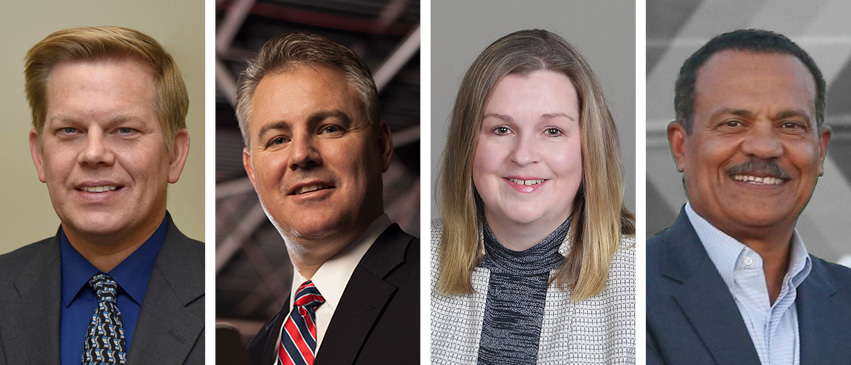
Have these mitigations been effective in maintaining business operations and productivity during this challenging time?
Mark: We’re really pleased with how we have adapted to the changes. There is no substitute for personal human interaction, and we know the benefits that can come from working together on projects. The advanced technology really can bring us closer together. I can’t imagine how this would have worked before cellphones, laptops and computer programs that allow us to host meetings remotely. I’ve been impressed with our 3,000-plus employees who have embraced the challenges to ensure we do what we need to do. Our research data indicates that our customers are satisfied with our performance. In 2020, Ameren Illinois ranked #1 in overall customer satisfaction among Midwest large utilities in the fourth and final wave of the JD Power Electric Residential Customer Satisfaction Study. In fact, customers were asked to rate our response to the coronavirus outbreak, and their favorable answers to this question were among the factors that led to our high overall ranking.
Bradshaw: Thankfully, AMT maintained the overall health and well-being of our team during the most difficult times of the pandemic. That was key in maintaining operational continuity. In the earliest days, our Incident Command Team met seven days a week to continually reassess our responses to challenges presented by the pandemic. Access to our building has been limited since March, and anyone entering is subject to a temperature screening and health survey. Paramedics and EMTs were issued additional uniforms, access to showers, and bags in which to transport and launder clothing. Transport vehicles are regularly sanitized using a peroxide mist fogger, the same technology used to sterilize surgical suites.
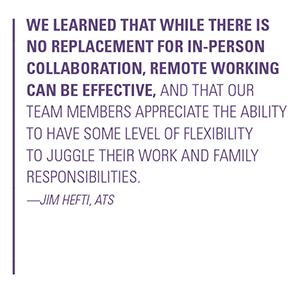 Kisby: Our focus on safe working practices and protocols was relentless and critical to keeping staff motivated and feeling comfortable coming to work. November and December were the hardest months for our operations with employee absences due to COVID. Employees worked with us to cover routes and projects for co-workers. It was a learning process for all.
Kisby: Our focus on safe working practices and protocols was relentless and critical to keeping staff motivated and feeling comfortable coming to work. November and December were the hardest months for our operations with employee absences due to COVID. Employees worked with us to cover routes and projects for co-workers. It was a learning process for all.
The company’s customer and service diversification enabled us to offset and manage the challenges. Our commercial business saw a reduction in services with so many businesses closed; restaurants suspended or curtailed services, and some of our largest industrial customers announced shutdowns. Our leadership team and employees were diligent in coming up with ways to offset reductions in revenue by focusing on expense reductions. Overtime was reduced, wage increases were deferred, and capital expenses were cut or deferred.
In April 2020, just two weeks after the shelter-in-place began, PDC Services Inc., began residential trash and recycling collection for the City of Washington. More than 4,500 new customer communications happened that week through our remote customer service team. Our IT support team handled almost 1,400 help-desk tickets in one week—about three times the normal amount.
The HR team completed COVID symptom screening calls with more than 200 employees who either called in sick, left work sick, reported a COVID exposure, exhibited symptoms and were seeking a diagnosis, or had childcare/eldercare issues. A resource was created for all employees to help them and their families navigate how and where to get COVID-tested.
Hefti: Our team’s quick response in implementing health and safety precautions were very effective in limiting exposure to the virus. Like many organizations, we did experience business interruptions at the beginning of the pandemic as we learned to navigate through this new way of working. Our manufacturing employees—who normally work in small teams to maintain complex equipment—had to learn how to do their jobs while being socially distant. Our office employees faced initial challenges working remotely, such as home internet speed, juggling their work and parenting responsibilities, and just finding a space to call their “office.” Our internal IT team was prepared and did an outstanding job supporting everyone and ensuring our team members could continue to do their jobs effectively.
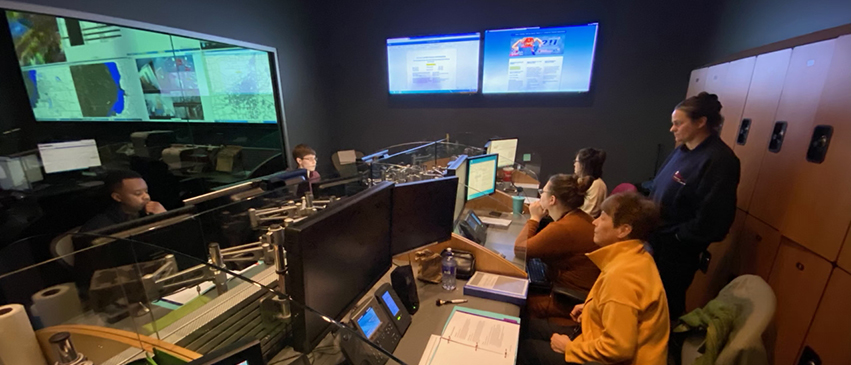
How have the pandemic and associated mitigations impacted the workplace and/or company culture?
Mark: As I noted, the pandemic has affected the way we do business. There is no doubt that some employees can be productive working from home. Still others derive a certain amount of energy, creativity and productivity from being in a common location with their peers. As leaders, it’s our job to reinforce the notion that we did not expect to see a drop-off in performance. We have encouraged our employees to disconnect and get away from “work” in order to avoid feeling captive to the job. On the other hand, we’re not traveling as much, and fewer hours on the road means less fatigue and more time to focus on the tasks at hand. So, in some ways, we can expect productivity to increase. We recently conducted an internal survey to understand how our co-workers are adapting and whether or not they feel they are receiving adequate support. The results are encouraging. Engagement is very high, above national norms.
I think the bigger challenge has been for our customers. We recognized the financial impact the pandemic had on both our residential and business customers. We heard from customers who never had a problem paying bills and suddenly found it difficult to pay. We took immediate steps to provide them relief, waiving late payment charges and suspending disconnections for non-payment. We launched our COVID-19 Economic Hardship Recovery Program to provide a clear path for customers to get back on track. To date, we have distributed more than $9 million in assistance to help customers pay their bills. We also extended the length of time they can take to repay an outstanding balance. Payment agreements can now go up to 24 months, and no down payment is required.
Bradshaw: The pandemic has particularly challenged our EMS Academy, which trains future EMTs and paramedics. Classroom learning was restored partially through effective on-site rapid testing capability. We shared that capability with every police, fire and emergency medical services agency in Peoria, Tazewell and Woodford counties.
Kisby: Our biggest cultural change was to be ready for rapid change and plan ahead to anticipate challenges. We learned that we are very adaptable and creative. When faced with crisis situations, we can perform exceptional work. In November, we saw a spike in employee cases and immediately tightened up safety protocols. We again reduced employees physically working in offices and encouraged those who could work from home to do so. We recently extended remote working and continue to monitor the situation. We revisited our paid time off (PTO) policies and allowed for some one-time exceptions, including payouts for unused time and carryover options. We had a lot of lessons learned from 2020 about how we could improve and navigate the COVID risk and deliver on our goals.
Hefti: Company cultures are always evolving, and the ATS culture is no different. ATS is, and always will be, a people company. Our culture is paramount to our success; we hire for culture match first and skills second. During the pandemic, we actually released the employee-written ATS Culture Guide to reinforce the importance of our culture—especially during these unique times. Our team members stepped up when others had to quarantine. They have been accommodating when parents had to step away from a virtual meeting to help their child with a school assignment. Most of all, they have shown compassion and understanding. I have never been prouder of the ATS culture than I have been over the past year.
What has been the biggest challenge of navigating the pandemic from an HR/workplace perspective?
Mark: With more than 60 locations across our territory, we had to ensure that those who needed to report to work could do so safely. Considering that an individual who contracted the virus may not show symptoms for 10 days made it difficult. So, 15 of our employees added “contact tracer” to their job responsibilities. They kept in contact with our employees, which resulted in thousands of interviews. Using this process helped Ameren Illinois do our part to slow the spread.
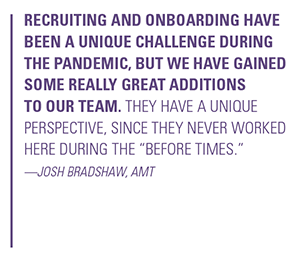 Bradshaw: Recruiting and onboarding have been a unique challenge during the pandemic, but we have gained some really great additions to our team. They have a unique perspective, since they never worked here during the “before times.” We are fortunate that our staffing levels were consistent throughout 2020 and we were able to add staffing and services as needed. Our team has grown due to our involvement in testing, vaccination, regional transport and employee wellness surveillance.
Bradshaw: Recruiting and onboarding have been a unique challenge during the pandemic, but we have gained some really great additions to our team. They have a unique perspective, since they never worked here during the “before times.” We are fortunate that our staffing levels were consistent throughout 2020 and we were able to add staffing and services as needed. Our team has grown due to our involvement in testing, vaccination, regional transport and employee wellness surveillance.
Kisby: There have been many significant challenges over the last year:
- Not having a business continuity pandemic plan required the executive leadership team to address employee questions and customer impact and develop new processes on a daily basis.
- Managing employee fear, frustration and anxiety. We had to learn and interpret new terms and procedures overnight from isolation, COVID exposure, quarantines, optimum time before COVID testing, FFCRA eligibility and more.
- Balancing team/operation performance with the emotional distraction of the crisis.
- Operating with a mindset of customers first and business as usual, while the environment around us was anything but normal.
- Not having medical resources on staff and navigating public health information and practices, the HR team became care coordinators, working closely with supervisors.
- Understanding the emotional and psychological impact the pandemic had on employees. Never have we been faced with a crisis that impacted personal and professional lives for every person in the company.
- Keeping teams engaged while working remotely.
Our biggest employee challenge for 2021 is to help find ways to reduce the burnout that comes from prolonged periods of change and uncertainty. Our employees worked very hard to help the company respond to the pandemic in 2020.
Hefti: Throughout the pandemic, we have closely monitored which team members have been exposed to COVID-19 or who may have tested positive. Every team member is unique, and every situation can call for a different response. We have done our best to cater our support based on the individual’s needs and every time we thought we had “seen it all,” a new situation would arise. Additionally, having most of our team members physically working in diverse environments throughout the country was extremely challenging. We had to not only stay on top of the tri-county health departments’ guidelines, but local guidelines across the country. Finally, the uncertainty of the timeline of this pandemic has been frustrating for everyone. Throughout the entire pandemic, we took the approach to communicate regularly and transparently with our team members. We explained what we knew and asked for their patience, and we all pulled together to support one another.
Which changes to company policies or procedures do you plan to retain after the pandemic is over?
Mark: There really is no “business as usual” anymore. We will adapt to the conditions we face and do whatever is necessary to meet the needs of our customers and employees. It’s difficult to project what things will look like as the virus is brought under control. Throughout this pandemic, we have learned that we can be agile and responsive. That gives me confidence that we’ll make the right decisions going forward.
Bradshaw: AMT has certainly forged a stronger bond with Public Health. Our staff tested thousands of people and traveled to local shelters, special congregate living facilities, and closed points of distribution to provide testing and vaccinations to those who may not have had access otherwise. We would anticipate continued partnerships with these organizations and increased community involvement.
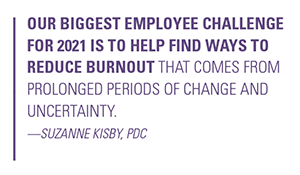 Kisby: Our PPE and safety protocols will continue in 2021 until such time that it is safe to relax these policies. The boundaries of work life and personal life have never been more mixed—we plan to retain elements of flexible working, while still maximizing those important “in-person” connections. The pandemic increased the role we play in employees’ financial, physical and mental well-being, and we continue to re-evaluate what is temporary or permanent support through enhanced sick leave, flexible hours and child care provisions. We intend to issue more frequent communications to employees and keep our COVID resources refreshed and available on our intranet. Transitions to digital platforms will continue to increase as we look to streamline our processes.
Kisby: Our PPE and safety protocols will continue in 2021 until such time that it is safe to relax these policies. The boundaries of work life and personal life have never been more mixed—we plan to retain elements of flexible working, while still maximizing those important “in-person” connections. The pandemic increased the role we play in employees’ financial, physical and mental well-being, and we continue to re-evaluate what is temporary or permanent support through enhanced sick leave, flexible hours and child care provisions. We intend to issue more frequent communications to employees and keep our COVID resources refreshed and available on our intranet. Transitions to digital platforms will continue to increase as we look to streamline our processes.
Finally, we need to continue to give our leaders due credit. Under high-stress and chaotic conditions, they solved many problems, adjusted workflows and processes, and spent hours listening to their teams promoting psychological safety so people could express concerns and ideas.
Hefti: The pandemic forced us to expedite our adoption of virtual tools and technology, and fortunately our customers and team members embraced it. It caused us to think differently about how much we travel. Just since October, we have logged over 18,000 meetings through Microsoft Teams, with nearly one million minutes of video. We also learned that while there is no replacement for in-person collaboration, remote working can be effective, and that our team members appreciate the ability to have some level of flexibility to juggle their work and family responsibilities. These are all positive changes that we plan to continue.
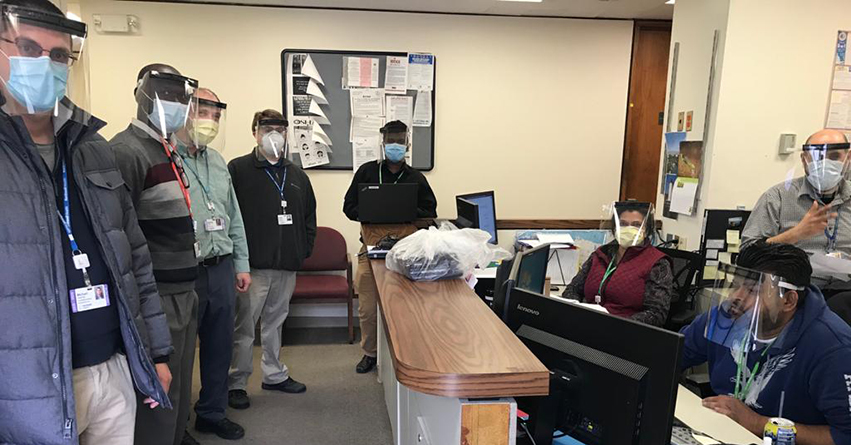
Anything else you wish to add?
Bradshaw: Preparedness is the hallmark of our business. Early in 2020, before COVID-19 arrived in central Illinois, we reconfigured and upstaffed the United Way/AMT 2-1-1 call center, purchased additional transport vehicles, hired more field providers, enhanced our dispatch protocols and triage capabilities, and reinforced nearly every aspect of our operations. AMT’s commitment to protecting our communities—particularly the most vulnerable populations—has been evident throughout the crisis. During all of this, we underwent reaccreditation from the Commission for Accreditation of Ambulance Services in late 2020. We are happy to report that we achieved another three-year accreditation with a perfect score.
Hefti: Throughout the pandemic, the support we have received from the Peoria community has been outstanding. We collaborated with organizations that we have never worked with before. Everyone has been happy to share their procedures and practices, and we have shared our expertise as well. While I would never want to repeat the past year, I do think there were some outcomes that will positively shape the future of the local community. PM
- Log in to post comments

